On Jealousy: Call (Me) Your Boyfriend
Laurence Ross takes a closer look at local favorite Boyfriend, her recent video "Jealousy," and the construction of identity.
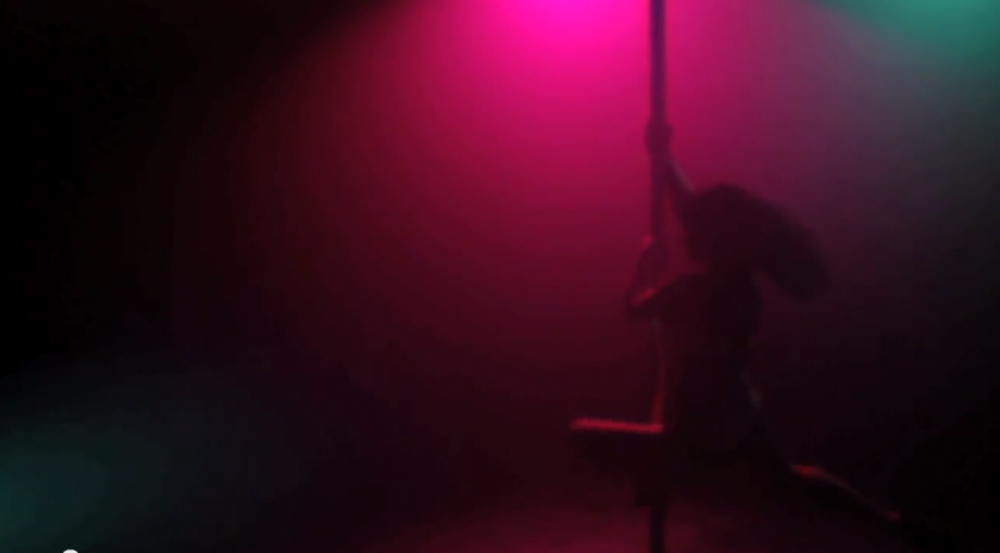
Production still of Boyfriend's "Jealousy." Courtesy the artist.
What is sexy is not that I’m naked. It’s that I’m “naked.”- Boyfriend
The first time I saw Boyfriend, it was her birthday. She was throwing a party/show for anyone who wanted to attend. In between bouts of rapping about sex acts, crude as the beer-splattered concrete on which we stood, she pushed sweet cake into our mouths. As she poured champagne down our throats from the height of the stage, a number of altered states emerged: sugar rush, bubbly buzz, and a ringing in our ears. This night was over a year ago, and her unrefined rawness overpowered the glaze of cake. Boyfriend was a performer intent not only on audience presence, but also audience participation. If her act was a game, she needed other players. With her raunchy lyrics, she wasn’t merely flirting with her spectators. She created an atmosphere of shock, of blunt commands that, if one could get over the spectacle, eventually gave way to intimacy. What Boyfriend wanted, ultimately, was a relationship.
Now, my relationship with Boyfriend has evolved—not before my eyes, but behind my back. Her first EP, titled Love Your Boyfriend, was released last November and makes clear that, since I first saw her, she has reprioritized. She seems to have spent the year thinking, redefining herself as well as her definition(s) of love. If you were in a relationship with Boyfriend, get ready to have “the talk.”
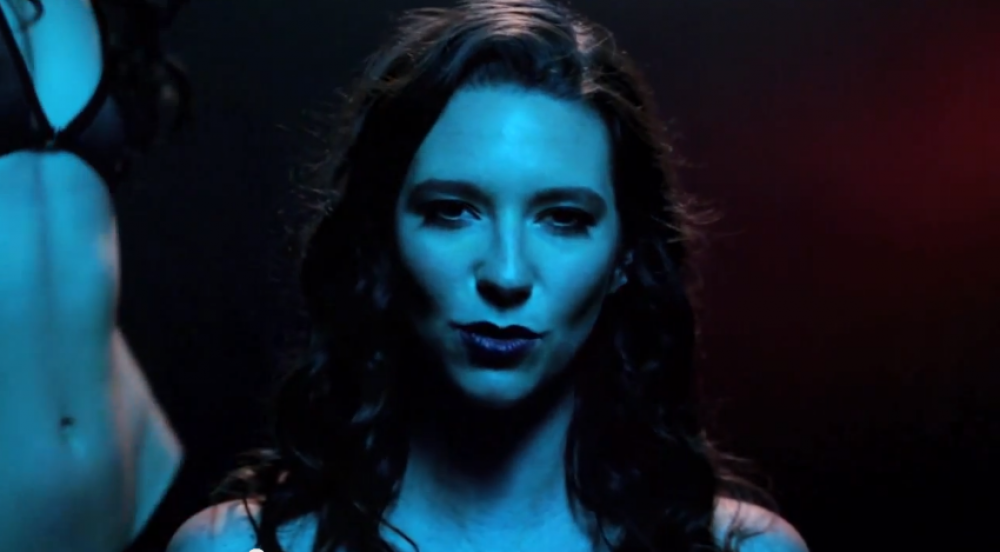
Production still of Boyfriend's "Jealousy." Courtesy the artist.
Jealousy is often a benchmark for change in a relationship, and Boyfriend’s single of the same name is no different. There is a gloss to the video for “Jealousy” that we have not seen from her before. The production value, the videography, the hair, the makeup, and even the lyrics are slick. Polished. “Jealousy” opens with a woman walking away from the camera toward a stripper pole to take the first couple of twirls. Amateur hour has come and gone. A heel skillfully sweeps just above the surface of the floor, the performer dips into a backbend, and then she immediately pulls herself firmly into her next spin. She exhibits exacting control: she is not bending over backwards at your command; she moves independently. If anyone lacks agency in this situation, it is you (the observer/spectator), not her (the observed/spectacle). This is a relationship where the power is inherently lopsided, though not in the ways we typically imagine. While the performer chooses to execute her choreography, we can’t help but watch.
The song, in a sentence, is about Boyfriend, a neo-lady-in-waiting for another woman she readily acknowledges as a “queen.” Although here, in this new age, the ways in which Boyfriend wishes to service her mistress go beyond trusted confidante. The images of Boyfriend during the first verses of the song show her making direct eye contact with the camera/viewer/object of desire, and her lyrics are a list of wishful commands. (“Baby baby say my name baby say my name / Say you love me say you want me say you feeling just the same.”)
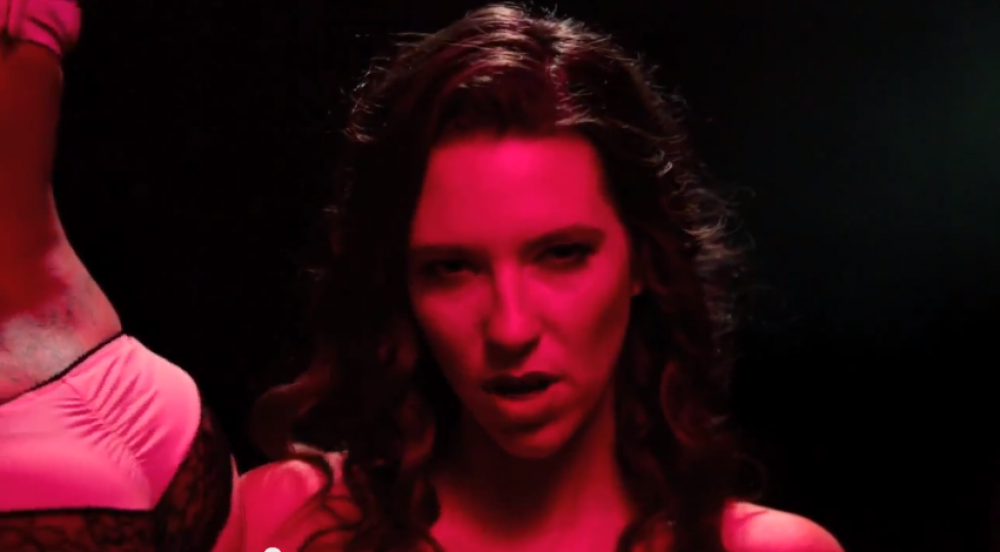
Production still of Boyfriend's "Jealousy." Courtesy the artist.
So yes, this is a song about desire—the jealous desires of Boyfriend for the love of another who is already taken, whose attention is otherwise occupied. But this is also a song about the jealous desire of Boyfriend for the love of an audience who may or may not be interested. What Boyfriend has wanted from the beginning—and still wants—is a relationship, and relationships demand attention. The title of her EP says as much, with its not-so-patient command: Love Your Boyfriend.
The second verse of the song is even more desperate, as Boyfriend is still stranded in the dark cavern of unrequited love that is the strip club. She sings: “Baby baby open up baby open up / Show me tell me get to know me baby show me all your stuff.” In this verse, Boyfriend starts allowing herself to bleed out of her polished container. The image of Boyfriend shifts; her eyeliner and lip liner run. This is Boyfriend letting the mask, if not fall, then slip. Her locks have tumbled from their hairsprayed curlers, frayed into a state of less control; her face is bathed in the green light of jealousy. And what is jealousy if not control slipping from a tight, and perhaps desperate, grasp?
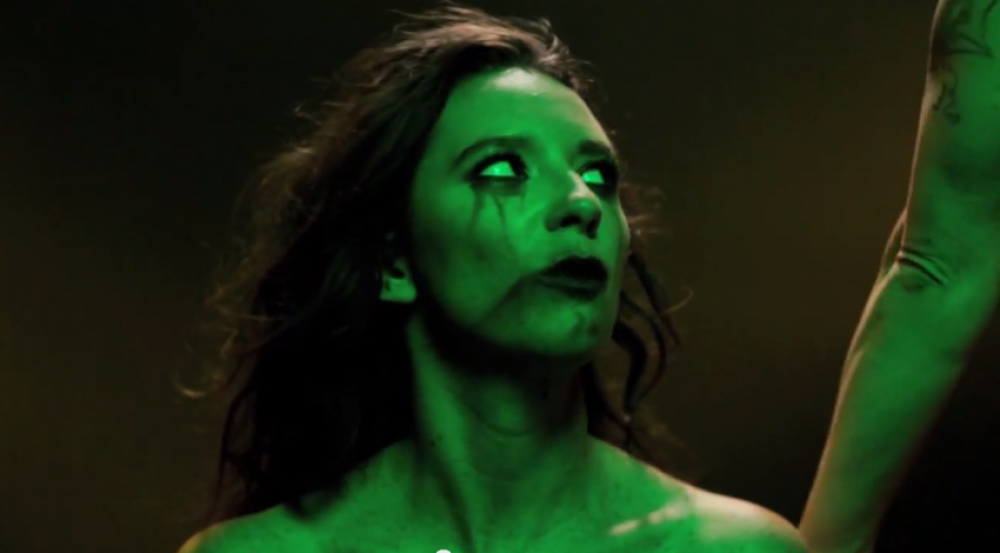
Production still of Boyfriend's "Jealousy." Courtesy the artist.
Perhaps to view any relationship fully, three-dimensionally, is to acknowledge the existence of the other(s)—the specter-turned-reality of lovers past, present, and future. (The primary-colored lenses used in the “Jealousy” video—blue and red—suggest the existence and eventual emergence of another, just as the 3D movie theater glasses of old promised a future breach of 2D reality.) Jealousy is always a disruption, an altered state, and, at a time when it is easier than ever for us to be wrapped up in our own little universes, jealousy is the disruption Boyfriend has set out to become.
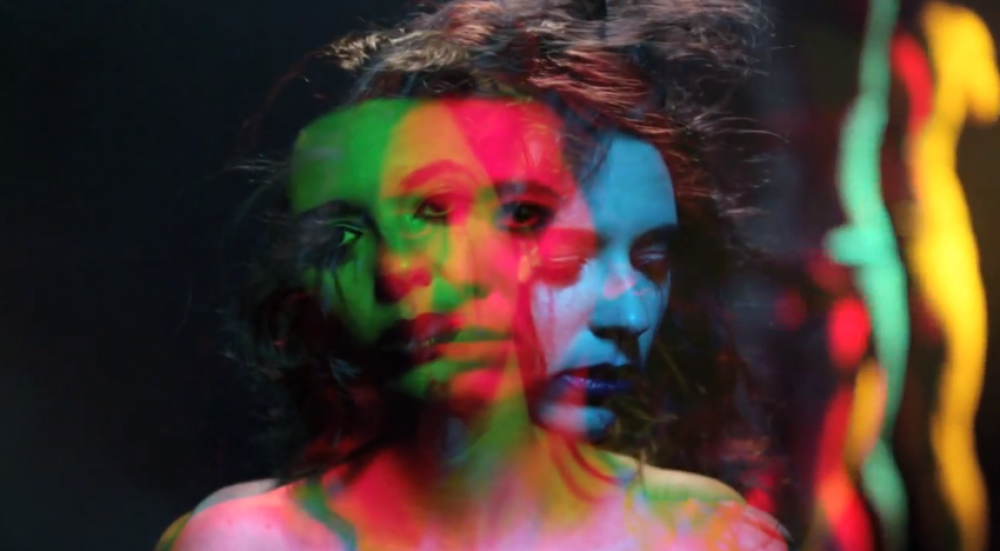
Production still of Boyfriend's "Jealousy." Courtesy the artist.
Boyfriend seems her most genuine when singing the chorus. These are the only moments when she addresses jealousy head on. (“I can hardly breathe for the jealousy / Baby I need you I need you to need me.”) And, in these moments when she appears the least postured, stepping out bare from behind the cover of the blue/red/green lens, she also appears the most dazzling. Is Boyfriend sweating? Or covered in glitter? The questions and answers become conflated and confused, as jealousy is anything but simple and singular.
The Boyfriend of the chorus is shimmering, gold, multiplied: a three-headed creature, a chimera, a being of multi-faceted (and disparate) perspectives belonging to another world. As Hesiod describes the chimera in his poem Theogony, a female with masculine mane. In some ways, the chimera is a riddle of being, the very definition of queer; a chimera refuses to be considered explicitly one identity/label or another (“You a beast you my dream man / You my girl too”). A (seemingly) implausible product of the imagination—and one that demands a certain degree of contemplation if we are able to make any sense out of it.
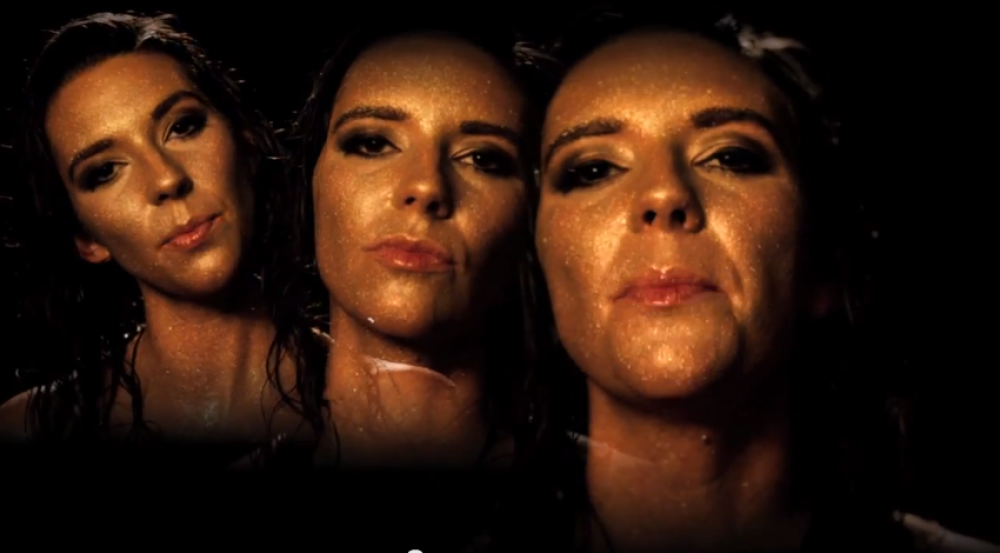
Production still of Boyfriend's "Jealousy." Courtesy the artist.
Boyfriend is a word that conjures many emotions. I love my boyfriend; I hate my boyfriend; I miss my boyfriend; I want a boyfriend. A boyfriend is not simply a lover/ex-lover/lost lover/lover to be. Boyfriend is a stand in, a word that represents whoever will eventually occupy this space, occupy our time. Boyfriend is a signifier without a signified, an empty promise/cypher, a celebrity cardboard cutout standing by the perfume counters of every American department store selling “beauty,” “sex,” “happiness,” or “forever”—until boyfriend can be known more personally, more intimately, face-to-face, an identity we gradually grow to understand.
Thus far, most of the press—in the form of interviews—with Boyfriend has focused on further sensationalizing what is already inherently sensationalized: the biographical details of Boyfriend rather than the work itself. I suppose this focus makes sense, but it is also misleading. Yes, Boyfriend is a female rapper who appears to be white singing raunchy lyrics. And a (former) grade school teacher writing lyrics that so openly discuss hand jobs, her masturbation prowess, and vaginal fluid is interesting, but only momentarily. If Boyfriend were just her narrative and her fondness for granny glasses, she would remain as flat and two-dimensional as the word she has, paradoxically, adopted as her name.
In a recent series of portraits by local photographer Akasha Rabut, Boyfriend is shown literally painting two-dimensional stick figures and trees. She is wearing her signature glasses. In many ways, she seems to be embodying the grade school teacher rather than the rapper, as she wears a huge smock, sneakers, and a fairly modest dress adorned with flowers. But the degree of artifice highlighted in these portraits (the beret, for example) is a tip off—a sign not that what we are looking at is all surface, but that there is more to see. Her 2D line paintings stand on three-legged tripods. The colors on her painter’s palette remain pristinely segregated in a way no artist’s could possibly be.
Of course, these portraits are posed. But Boyfriend feels more like a collaborator with Rabut than a model. There seems to be a mutual understanding of the complexity of Boyfriend’s image. (In “Jealousy,” we see a cameo of the spectacle-wearing Boyfriend sitting back, receding into the background to allow a more polished, multi-dimensional persona to take center stage.) Boyfriend is emerging more than ever as a conscious participant in—and manipulator of—her construction of self.

Portrait of Boyfriend. Photo by Akasha Rabut.
The portrait by Rabut that seems most revealing, that betrays the biggest wink to the viewer, shows Boyfriend brushing green paint on the leaves of a flowering tree. Boyfriend does not need to strip off her clothes, as she has been known to do on the stage, to be “naked” for her audience. In this photograph, the “natural” is called into question by the act of painting. Boyfriend looks not at her work but directly into the camera with a face that looks expectant, skeptical, and challenging. She seems to be asking: "Do you see what I did there? Do you believe what you see?" There is nothing raunchy about this portrait. This is a Boyfriend who does not need to be sexual to be provocative. But this is a Boyfriend who, like her other incarnations, still has the same objective: a relationship with her audience. She wants you to stop, pay attention, and eventually get in on the act.
Editor's Note
Want to see more Boyfriend? Pelican Bomb has previously unpublished portraits of Boyfriend by Akasha Rabut.



